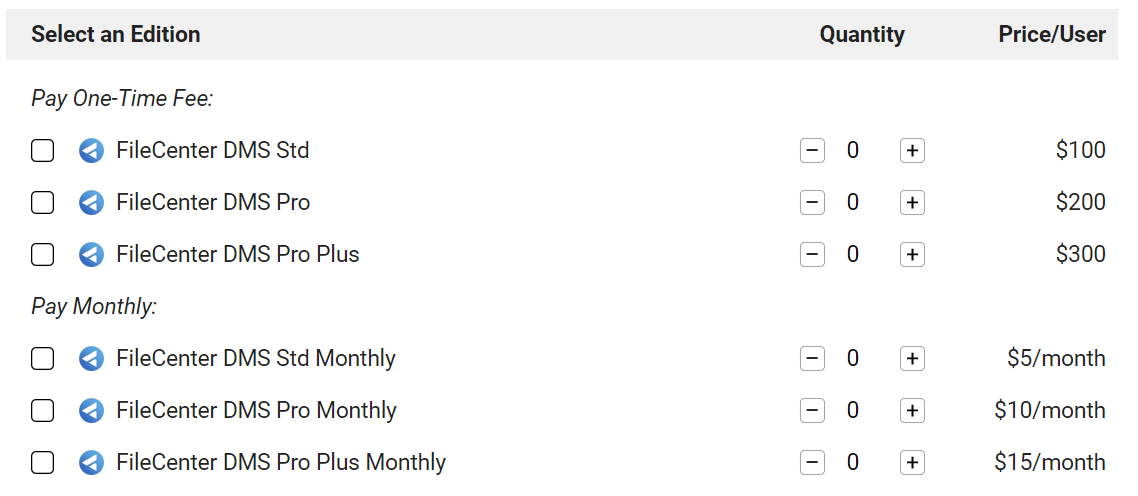6 Ecommerce Pricing Strategies That Maximize Revenue
6 Ecommerce Pricing Strategies That Maximize Revenue
In the 14th century, Europe’s then-stagnant fields, such as art, philosophy, and academics, began to bloom with new vigor. Spurred on by changing social attitudes and a community of aspirational peers, the sociopolitical landscape of Europe radically changed for the better, leading to a period known as “the Renaissance.”
In the 21st-century global business landscape, ecommerce is entering a renaissance of its own. The shift toward digital experiences and contactless transactions, along with innovations by fellow ecommerce companies, are fueling a uniquely pivotal moment for ecommerce pricing strategies.
Are you ready to take advantage of it?
As more and more companies adopt effective ecommerce pricing strategies, the market becomes more and more saturated. That makes NOW the best time to learn the best pricing strategies to maximize revenue for your ecommerce company.
Key Takeaways:
- While ecommerce companies can use the same strategies as brick-and-mortar retailers, smart ecommerce companies combine traditional strategies with new technology.
- Pricing strategies are as much about psychology as they are about money.
- Hypersonix can help you maximize your revenue through AI-powered profit optimization.
1. Charm Pricing Strategy
This common pricing strategy tweaks a price to make it appear as cheap as possible. For example, even though $19.99 and $20.00 are virtually identical, $19.99 has the appearance of being in “the teens” while $20.00 is in “the twenties,” so $19.99 “charms” customers into associating the price with lower numbers than what it really is.
2. Prestige Pricing Strategy
As opposed to charm pricing, prestige pricing sets an intentionally high price to project luxury or prestige. For example, Apple notoriously prices its products higher than major competitors yet continues to be extremely profitable compared to its peers. Their effective use of prestige pricing communicates a sense of luxury to customers, making them more likely to purchase.

3. Odd-Even Pricing Strategy
Charm and prestige pricing share one thing in common: the price numbers are extremely important. The theory of odd-even pricing suggests that odd numbers convey a discount, while even numbers convey a premium.
At higher price points, “odd” and “even” are less literal: price increments of 5 cents (prices in nickels and dimes rather than pennies) are more “even” than prices that would require pennies in change, even though a literal interpretation would say that 5 is an odd number. It’s not about math but psychology.
Companies often combine odd-even pricing with other pricing strategies. For example, a local restaurant wanting to appear high-end may pair odd-even pricing with a prestige strategy, setting the price of a meal at $16. Another restaurant wanting to appear cheap may employ the charm strategy and price the same meal at $15.99 – it isn’t about the penny but the psychology.
4. Tiered Pricing Strategy
Following Hulu’s lead, many streaming services offer both ad-supported and ad-free subscription tiers. Disney+ combined this tiered pricing strategy with a bundling strategy at launch, with options to bundle with Hulu and ESPN, either with or without ads.
Tiered pricing can be similar to bundling and upselling: one tier may include certain goods and services, while higher tiers include those goods and services in addition to tier-exclusive extras. However, tiered pricing can be more diverse. For example, Patreon uses tiered pricing for different content access levels, OpenAI for priority status, and SaaS companies to introduce features to their software.

5. Dynamic Pricing Strategy
Retailers traditionally use the supply-demand curve to determine their most profitable price point, but ecommerce allows “etailers” to set many different price points for even more profitability. For example, if an ecommerce company finds that customers are willing to pay more on Fridays than Mondays, they can dynamically adjust their prices accordingly.
Dynamic pricing can be as granular as the time of day or as broad as the season of the year. Ecommerce gives retailers the flexibility to modify prices as needed.
6. Personalized Pricing Strategy
Ecommerce companies using dynamic pricing may change their price frequently, but those changes apply to ALL their customers. Personalized pricing takes this one step further by tailoring prices to specific market segments or even to individual consumers.
By combining these strategies, ecommerce companies can gain the benefits of both dynamic and personalized pricing. Insurance companies, for example, have historically based premiums on a large amount of data about specific consumers – factors like age, health, sex, income, etc. But the tradeoff was that getting a quote for an insurance rate used to take hours.
With the progression of technology, you can get an insurance quote within seconds without simplifying their pricing model. Computers do all the research and calculations in seconds.
Today, this level of personalization isn’t reserved for insurance companies – your company can harness this same power.

Maximize Your Revenue with Hypersonix
In the past, these dynamic pricing strategies only worked for large companies with the resources to carry them out, but that isn’t true today. In the modern world, businesses of every size can harness these strategies through accessible, intuitive technology.
Hypersonix created the ProfitGPT platform to empower businesses of every size to use the power of AI and machine learning to maximize their profitability.
Through cutting-edge technology and proactive monitoring, HypersEcommerce Pricing Strategonix can help you leverage your data to rise above the competition through powerful pricing strategies, smart recommendations, and actionable insights.
To learn more about how Hypersonix can benefit your company, request a free demo today!





